Málaga is a fantastic city in its own right, brimming with history, art, delicious food, and sunshine. But one of its greatest assets is its location on the Costa del Sol and fantastic transport links, making day trips from Málaga an easy way to explore the wider region of Andalucia and beyond.
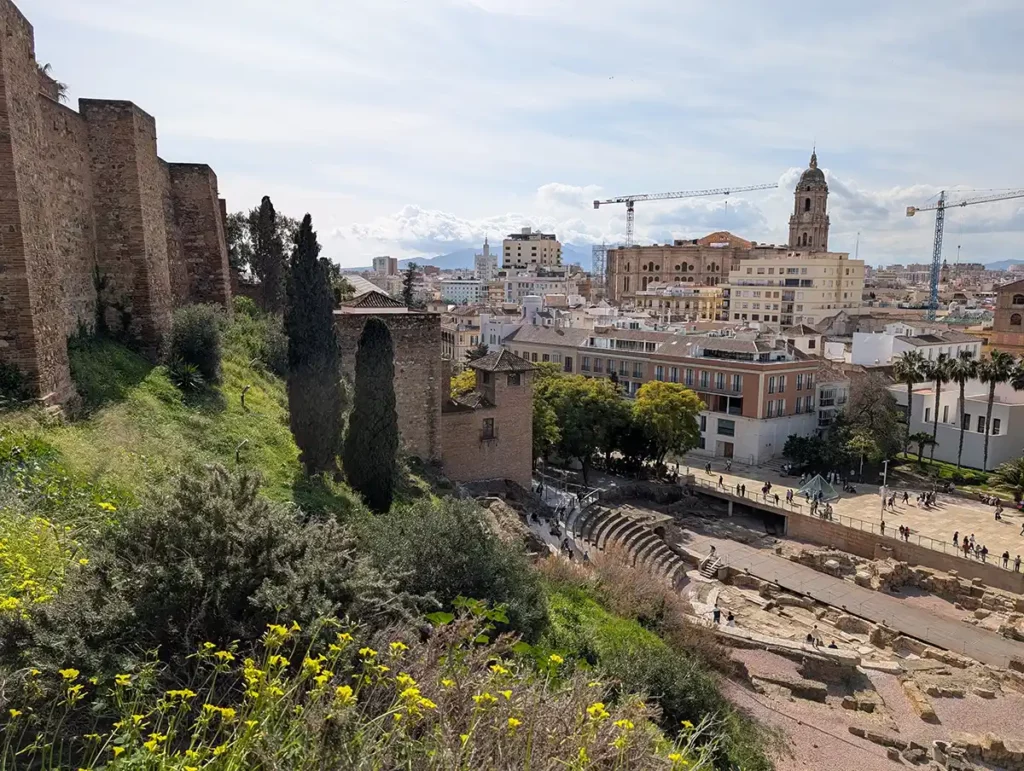
If you’re staying in Málaga for more than a few days, dedicating some time to day trips allows you to experience a richer variety of landscapes, cultures, and histories that this captivating part of Spain offers. Whether you fancy dramatic gorges, charming white villages, historic cities, or stunning natural parks, there’s likely one of these day trips from Málaga that fits the bill.

Ronda
Perched dramatically on either side of the El Tajo gorge, Ronda is one of Andalucia’s most iconic destinations. Its breathtaking Puente Nuevo (New Bridge), spanning the deep chasm, is an unforgettable sight.
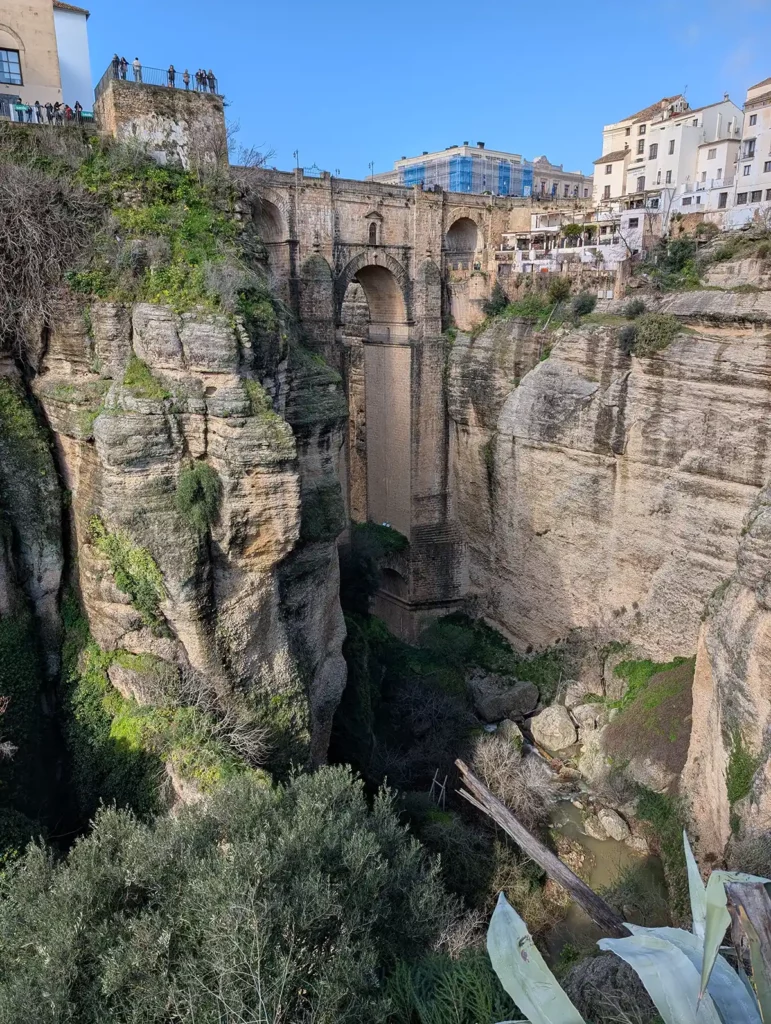
Things to do in Ronda
The main draw in Ronda is the jaw-dropping Puente Nuevo (New Bridge). Walk across it, peer into the gorge and explore the paths on both sides to find your favourite view of the bridge.
A lovely route is to cross the bridge, walk past the Convento de Santo Domingo and follow C. Cta. de Santo Domingo past churches and little squares to the Puente Viejo (Old Bridge) which has amazing views in every direction. From the Punte Viejo, head back up towards the Punte Nuevo through the Jardines De Cuenca which skirt the edge of the gorge and where you can get some of the best views of the bridge.
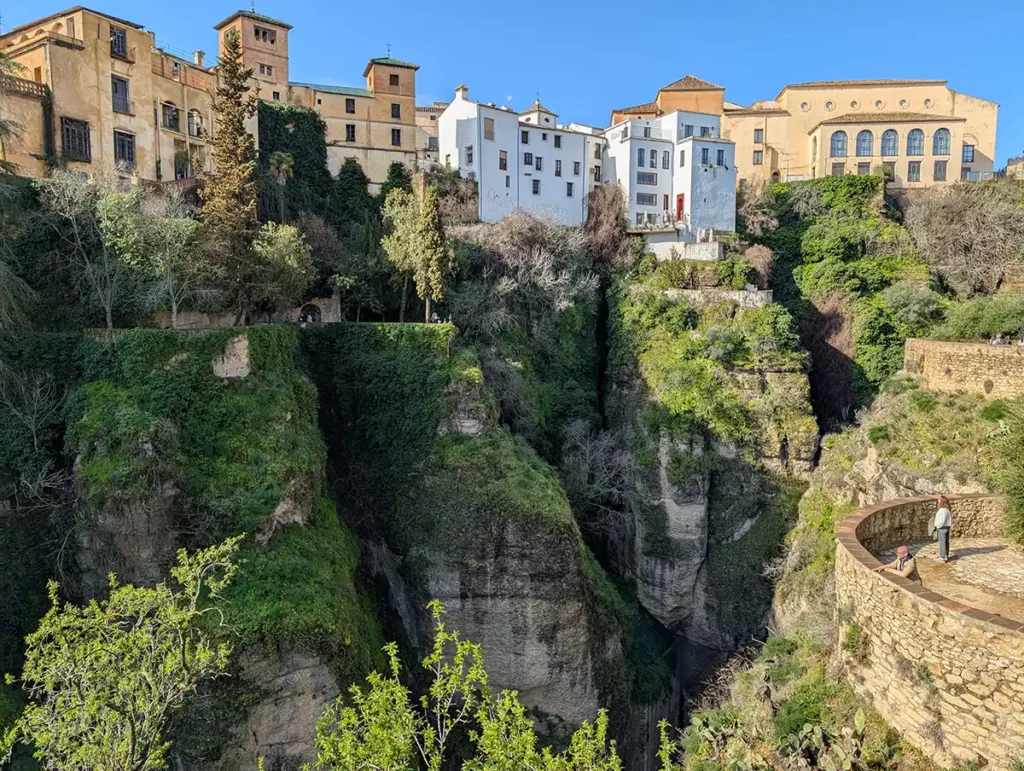
Once you’re back at Plaza España, a little path beside the Parador de Ronda hotel leads down into the gorge where you can actually go inside the bridge and see a small exhibition on how it was built. If you’re feeling more adventurous, there’s a via ferrata route down and along the gorge.
I don’t want to even think about bullfighting and would really rather not have even seen the building, but Ronda’s bullring is one of Spain’s oldest. There’s a museum inside.

How to get to Ronda
- On a guided tour: I chose to visit Ronda on a guided tour, which included 4 hours in Ronda and a stop in nearby Setenil de las Bodegas. It was a really easy way to see both towns in one day and we had about the right amount of time in each place.
- By car: If you’ve rented a car, Ronda is around 1 hour 30 minutes from Málaga. Once you leave the motorway, the route winds through the hills, offering lovely views. Parking in Ronda can be found in underground car parks near the centre.
- By bus: Several bus companies run services (around 9 daily) from Málaga Bus Station (Estación de Autobuses de Málaga). The journey takes around 2 hours. Buses arrive at Ronda’s bus station, a 10-15 minute walk from the main attractions.
- By train: Trains from Málaga to Ronda take around 2 hours and require a change. Train tickets tend to be more expensive than the bus. The train station is around 20 minutes’ walk from the Puente Nuevo.
Setenil de las Bodegas
20 km north of Ronda, Setenil de las Bodegas is a small town famous for its houses built into overhanging cliffs on either side of a river.
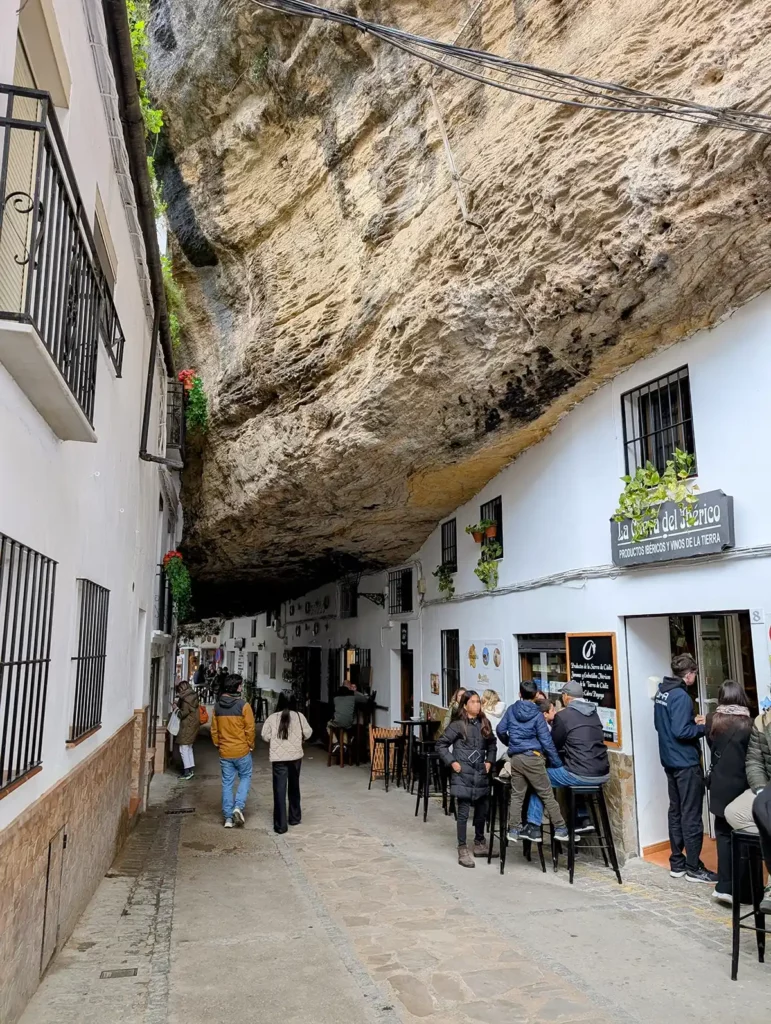
Things to do in Setenil de las Bodegas
The main attraction in Setenil de las Bodegas is walking along the streets under the rocky cliffs. The two most-visited are C. Cuevas del Sol on the sunny side of the river and C. Cuevas de la Sombra on the shadowy side. Both sides are lined with shops, restaurants and bars, popular with both tourists and local day-trippers.
Up on the top of the hill, you can visit the ruins of the Moorish castle and the impressive Iglesia de Nuestra Señora de la Encarnación which towers over the cave houses in the valley below.
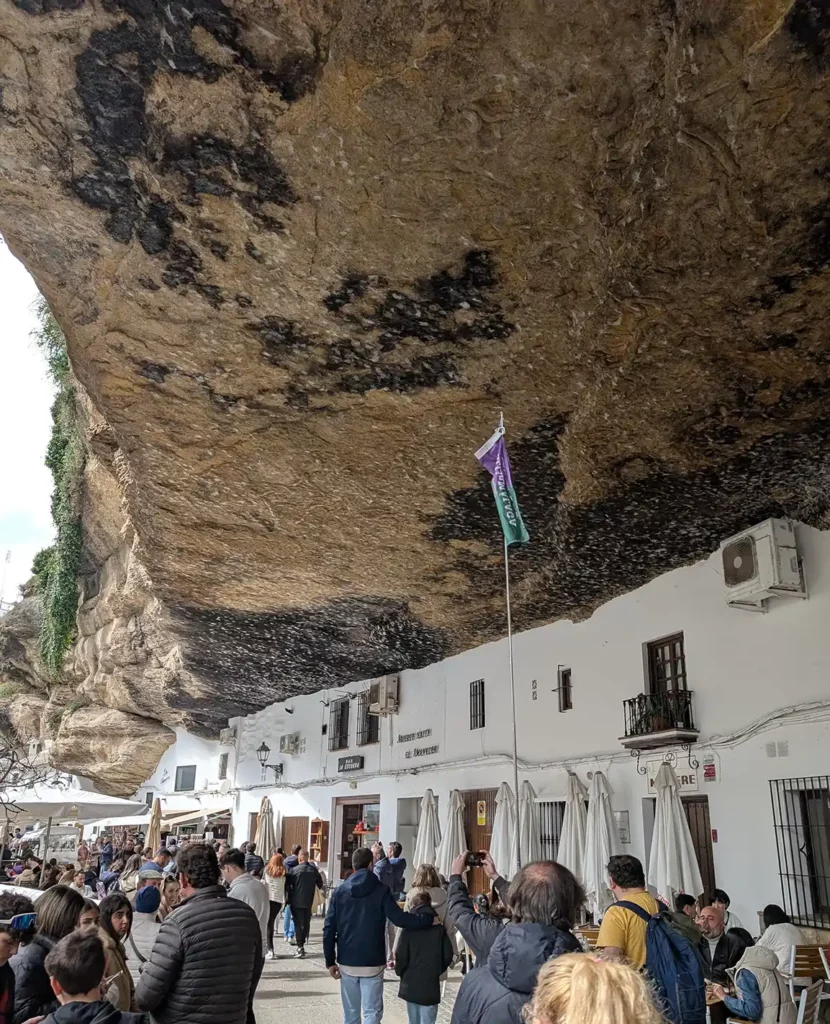
How to get to Setenil de las Bodegas
- Guided tour: The easiest way to take a day trip from Málaga to Setenil de las Bodegas is by taking a guided tour which combines Ronda with a stop in Setenil de las Bodegas. There are lots of options available on GetYourGuide, and when I worked out how much it would cost to either hire a car to get there, or do it by bus and taxi, the guided tour was much cheaper and easier.
- By car: Setenil de las Bodegas is just under 100 km from Málaga so it should take around an hour and a half to get there. Parking is available on the edges of the village but can get busy at weekends.
- By public transport: There’s no real option for getting to Setenil de las Bodegas by bus or train from Málaga. If you wanted to visit Ronda too, you could take a taxi between the two towns but at that point you might as well choose a guided tour instead.
Córdoba
Córdoba is one of the easiest day trips from Málaga. Just an hour north of Málaga by high speed train and easy to explore on foot, this beautiful city with an astonishing cathedral is well worth a day on your Málaga itinerary.
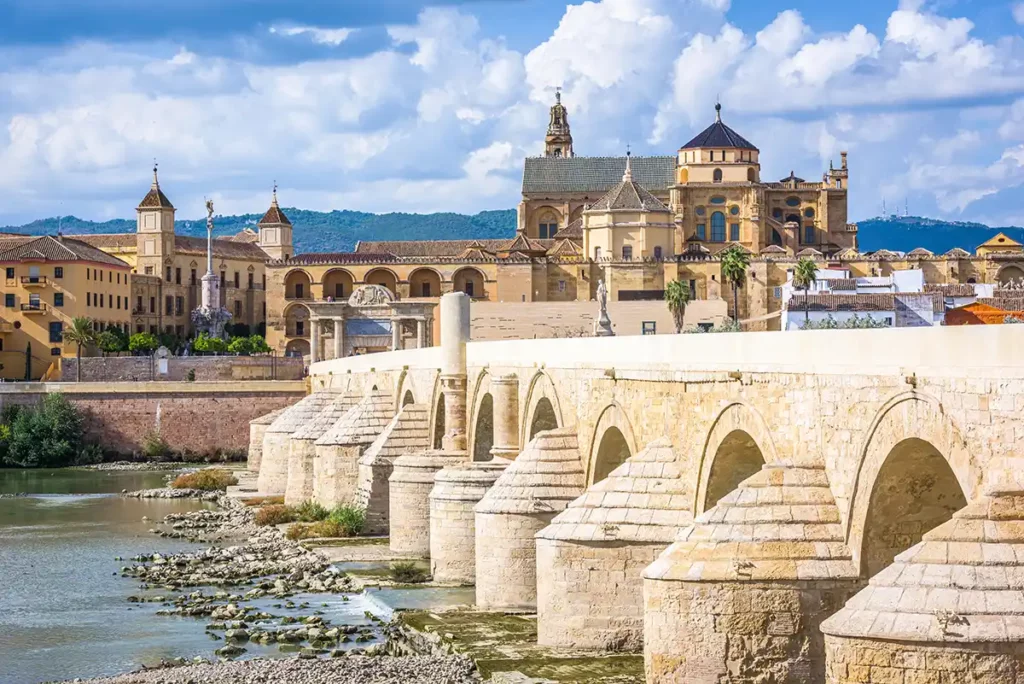
Things to do in Córdoba
The top attraction in Córdoba is the Mezquita-Cathedral. This unique building started life as a mosque with a forest of red-and-white striped arches. It became a cathedral in 1236 but remained largely unchanged until the 16th century, when a full Renaissance cathedral was built right in the middle of the old prayer hall.
It’s quite something to be wandering through dimly-lit medieval arches one minute and in a giant Renaissance church the next. Book tickets online to save time queueing.
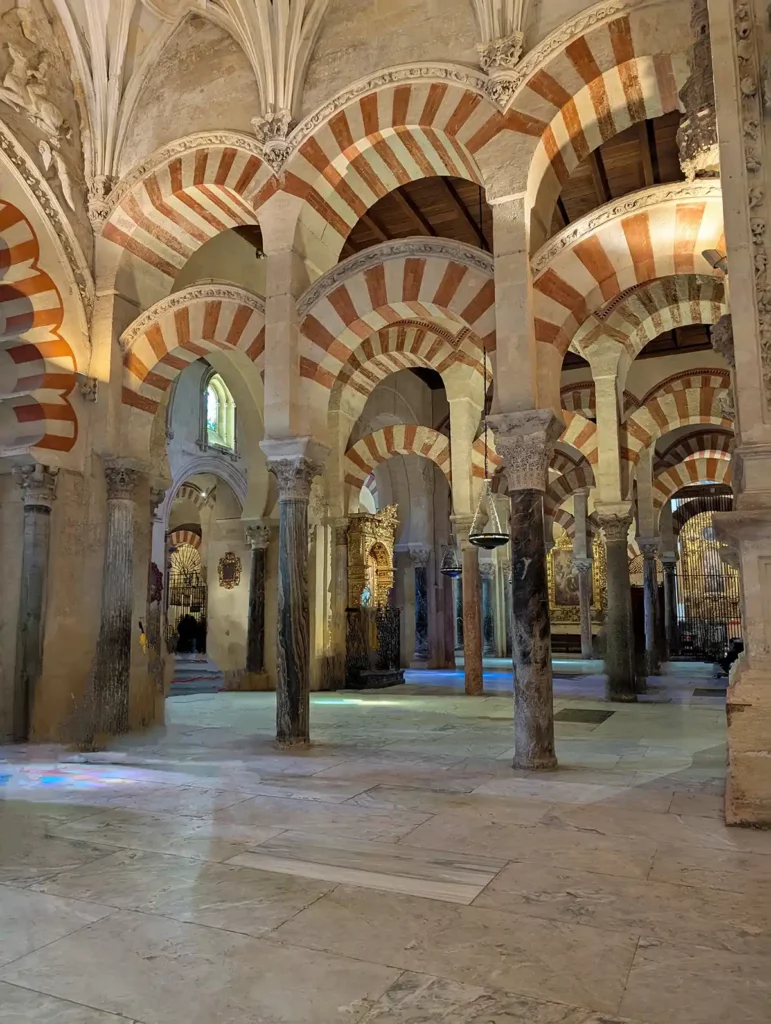
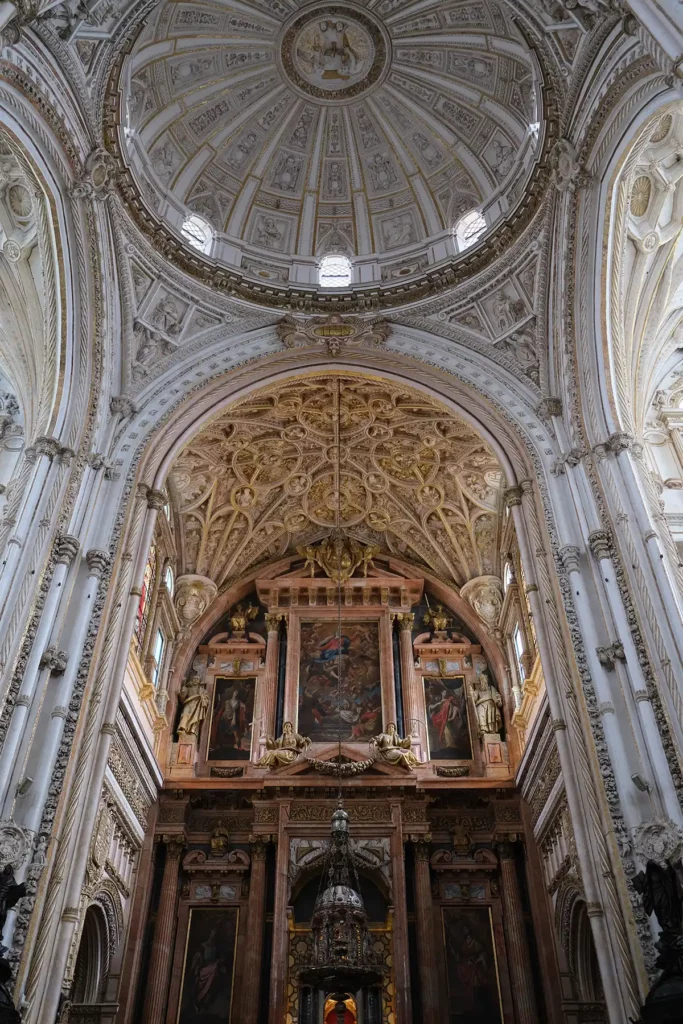
Nearby, the Roman Bridge is well worth seeing, as is the Alcázar de los Reyes Cristianos (Castle of the Christian Monarchs), a fortress-palace with beautiful gardens and patios known for their water features.
On your way to or from the Mezquita-Cathedral, make sure you allow some time for exploring the Juderia (Jewish Quarter), a charming labyrinth of narrow, whitewashed streets. It’s in this area where you’ll find many of Córdoba’s famous patios (courtyards), which are often lavishly decorated with flowers. Some are open to the public but many ask for a small donation.
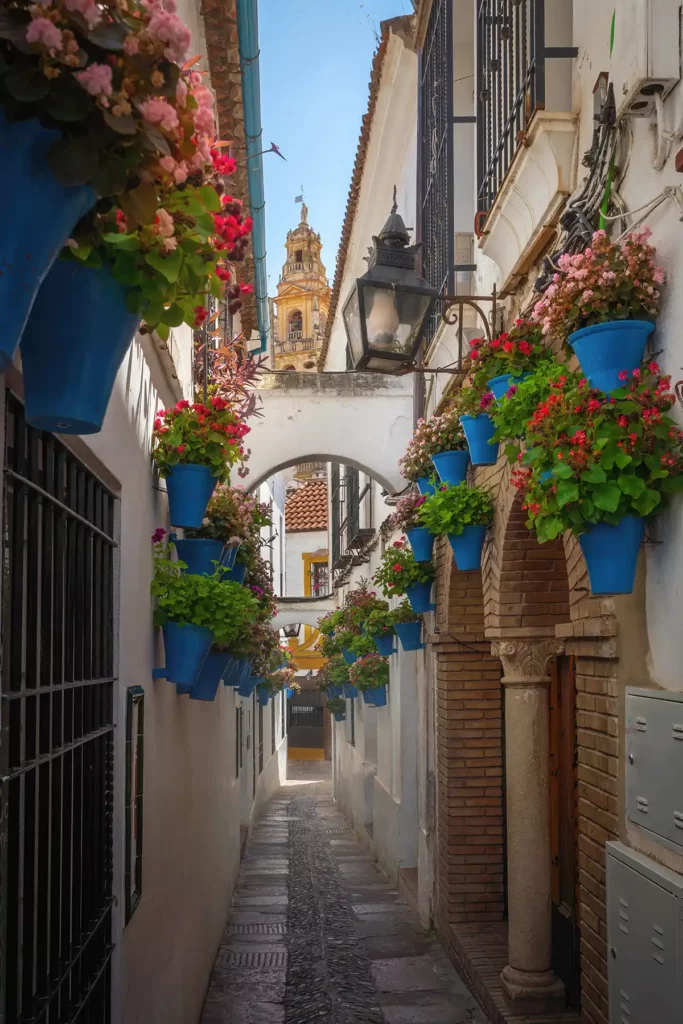
How to get to Córdoba
- By train: This is by far the easiest, fastest and most convenient option for day trips from Málaga. Comfortable high-speed trains operated by Renfe and Iryo connect Málaga María Zambrano station to Córdoba Central station in around 1 hour. Tickets can be pricey so book in advance if you can. Córdoba station is a 20-minute walk or a short bus/taxi ride from the historic centre.
- Guided tour: If the train tickets are too expensive, you may want to consider a guided tour from Málaga. Some tours, like this one, have options which include entry to the Mezquita-Cathedral and a guided tour of the city.
- By car: The drive from Málaga to Córdoba takes approximately 1 hour 45 minutes to 2 hours via the A-45 motorway. Driving into and parking within Cordoba’s historic centre can be challenging due to narrow streets and traffic restrictions, so it’s best to use one of the public car parks on the edge of the city, but that obviously adds extra time to your journey.
- By bus: Inter-city buses run between Málaga and Cordoba, but the journey is significantly longer than the train, taking around 2 hours 30 minutes, making it less ideal for a day trip.
Nerja and Frigiliana
This combination offers a taste of the coast east of Málaga along with one of the region’s most beautiful pueblos blancos (white villages).
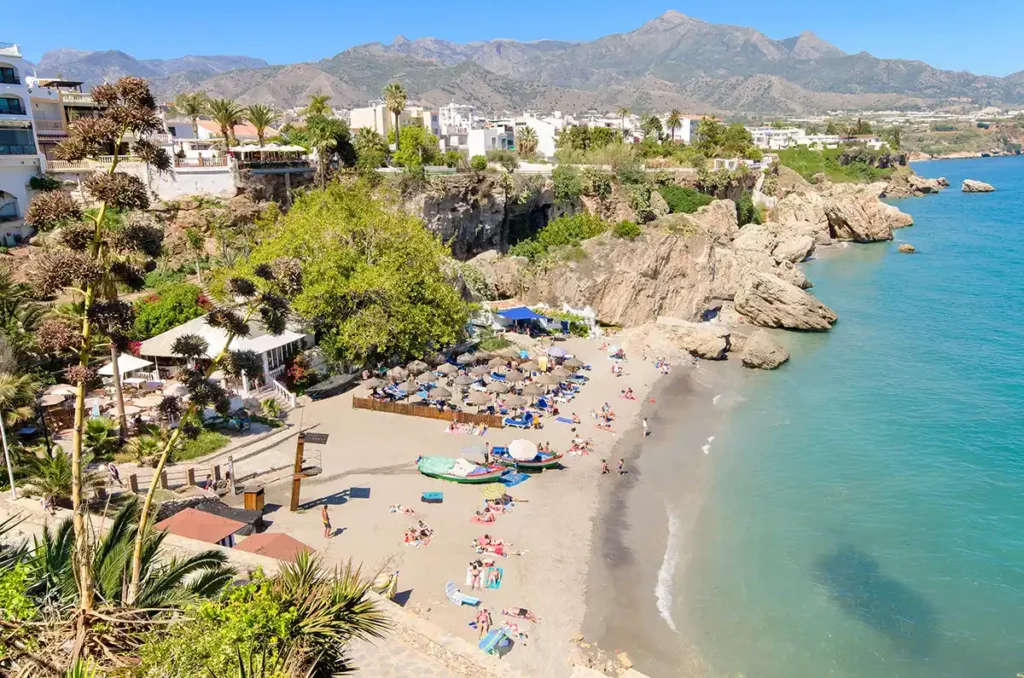
Things to do in Nerja
The Caves of Nerja (Cuevas de Nerja) are a must-see. This vast cave system is nicknamed the ‘natural cathedral of the Costa del Sol’ and has enormous caverns covered with stalactites and stalagmites. Allow at least 1.5 hours for your visit. It’s a good idea to book tickets online in advance, especially during peak season, as entry is timed. Standard adult entry is around €15.
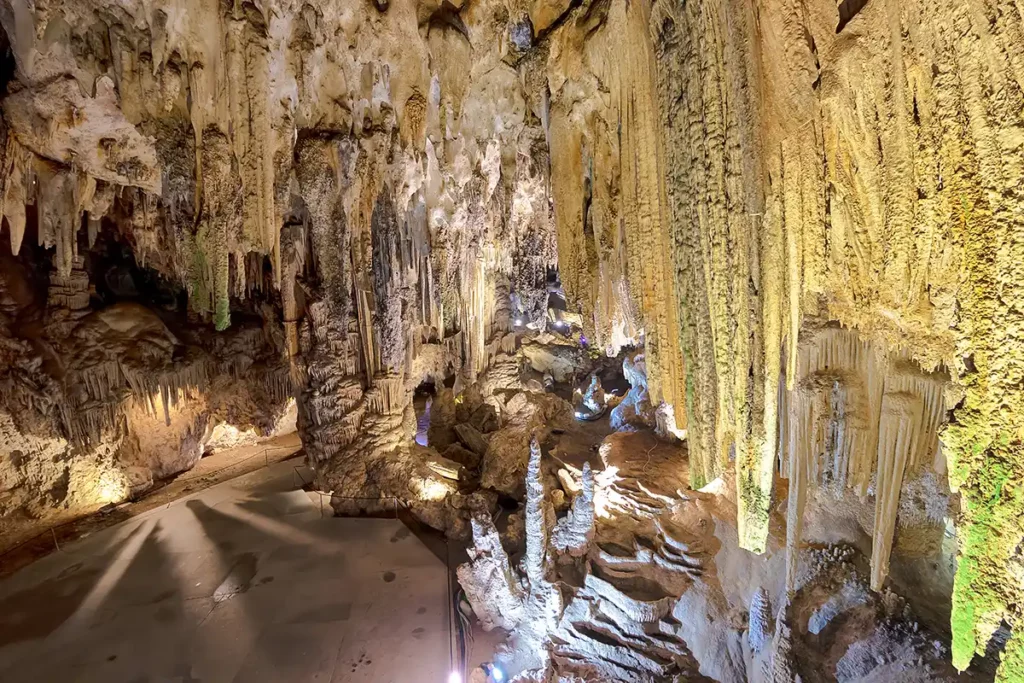
The Balcón de Europa is a panoramic viewpoint on a rocky headland, with gorgeous views of the Mediterranean. The streets leading back from the seafront are mostly pedestrianised and full of shops and restaurants. Nerja also has several beaches; Burriana Beach is the most popular.
Things to do in Frigiliana
Often described as the most beautiful village in Spain, Frigiliana is a maze of steep, narrow, whitewashed streets decorated with colourful flowerpots and intricate pebble mosaics. While there aren’t any major ‘sights’, the upper Moorish neighbourhood, the Barribarto, is a delight to wander through.
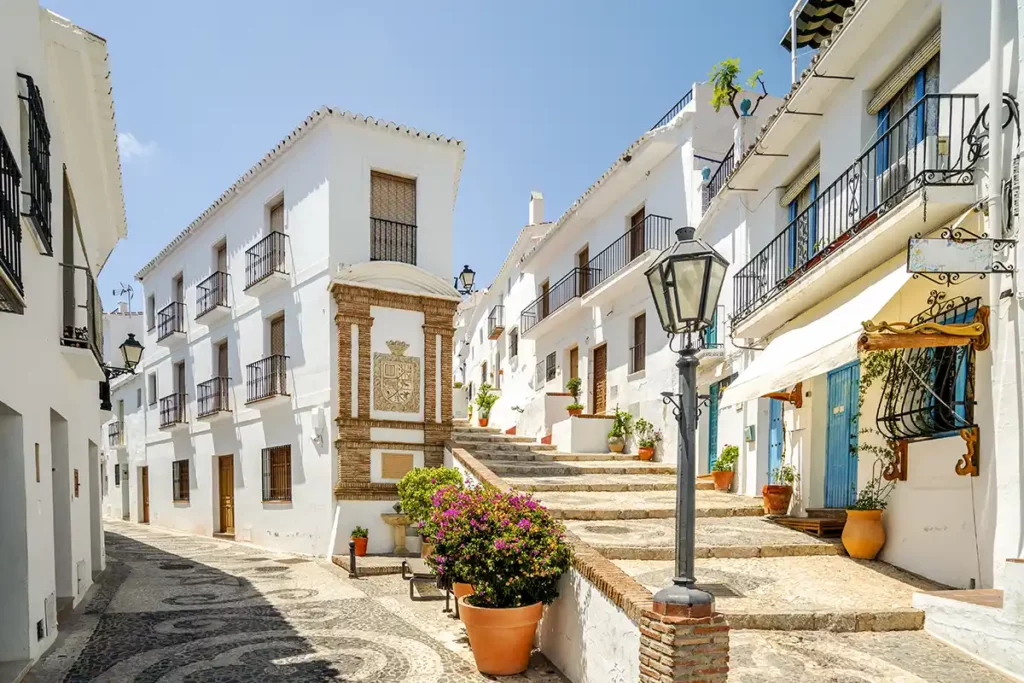
How to get to Nerja and Frigiliana
- Guided tour: Nerja, including the Caves of Nerja, and Frigiliana are a popular guided tour from Málaga. Tours from Málaga last around 9 hours and tend to include free time in both towns.
- By car: Nerja is an easy motorway drive from Málaga and takes around 50 minutes. From Nerja, a short drive inland (around 10-15 minutes) takes you up to Frigiliana. Parking in Nerja can be busy, especially near the centre and beaches. In Frigiliana, you should leave your car at one of the car parks on the edge of the village and walk in.
- By bus: ALSA buses run frequently from Málaga Bus Station to Nerja. The journey takes up to 1 hour 30 minutes. From Nerja bus station, you can take a local bus or a taxi up to Frigiliana.
Granada
The beautiful city of Granada is an unforgettable day trip from Málaga and well worth a long day to see its beautiful sights.

Things to do in Granada
Málaga has its own lovely Alcazaba, but it can’t compare to the magnificent, UNESCO-listed Alhambra in Granada. This huge complex occupying a hill above the old city includes the stunning Nasrid Palaces, the Alcazaba fortress, the Palace of Charles V, and the Generalife summer palace and gardens.
Alhambra tickets must be booked months in advance and sell out very quickly. You need to purchase a general ticket that includes access to all areas, plus, if you want to visit the Nasrid Palaces you’ll need a specific ticket which includes a timed entry. A visit takes at least 3 to 4 hours, but when I visited Granada I needed an entire day.

Beyond the Alhambra, wander through the Albaicín, the old Arab quarter on the hill opposite. Its narrow, winding streets offer stunning views of the Alhambra, especially from the Mirador de San Nicolás viewpoint.
If you have time, you could explore the Sacromonte neighbourhood, famous for its cave dwellings or visit the Granada Cathedral and the adjacent Royal Chapel (Capilla Real), the burial place of Catholic Monarchs Isabella I and Ferdinand II.
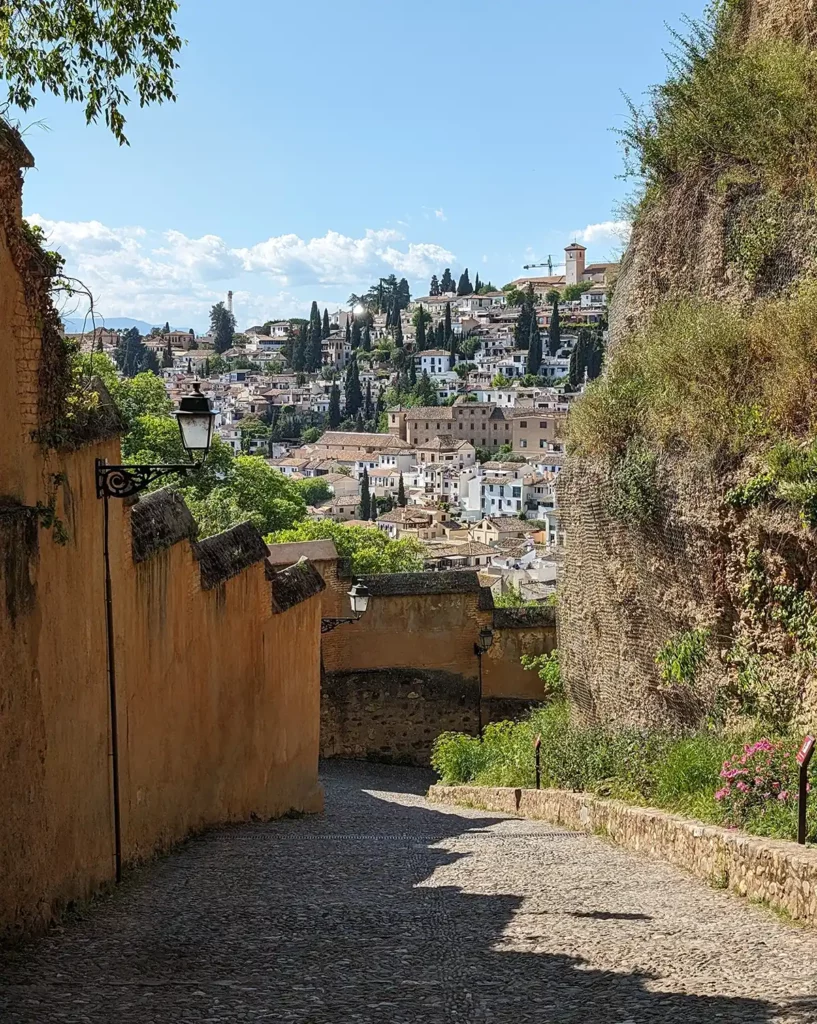
How to get to Granada
- Guided tour: There are a couple of advantages to taking a guided tour from Málaga to Granada. Firstly, you don’t have to deal with getting there, but taking a guided tour with Alhambra tickets included also saves you the hassle of securing tickets yourself. If you want to see the Nasrid Palaces, you’ll still need to book at least a month in advance – ideally two – and pick that option when you book.
- By car: The drive via the A-92 motorway takes around 1 hour 30 minutes to 1 hour 45 minutes. Driving into Granada city centre is very complex due to traffic restrictions and parking can be expensive.
- By bus: ALSA operates frequent coach services from Málaga Bus Station to Granada Bus Station. The journey takes approximately 1 hour 45 minutes to 2 hours. Granada’s bus station is located outside the city centre, requiring a local bus or taxi (around 15-20 minutes) to reach the main sights and another bus to get up to the Alhambra.
- By train: Renfe trains connect Málaga María Zambrano station with Granada but they’re much less frequent than buses and most will require a change.
Mijas Pueblo
For a taste of a traditional Andalucian white village without travelling too far from Málaga, Mijas Pueblo is an excellent option.

Things to do in Mijas Pueblo
Perched on a mountainside above Fuengirola, Mijas Pueblo is perfect for a relaxing day of exploring. Wander through the narrow streets, browse the shops selling pottery and leather goods, and enjoy views down to the coast.
One of Mijas Pueblo’s prettiest spots is the Ermita de la Virgen de la Peña, a small chapel carved into the rock. The surrounding park and viewpoints are lovely spots to relax. Another top place to visit is the quirky Miniatures Museum (Carromato de Mijas), housed in an old caravan, which has an eclectic collection of tiny artworks.
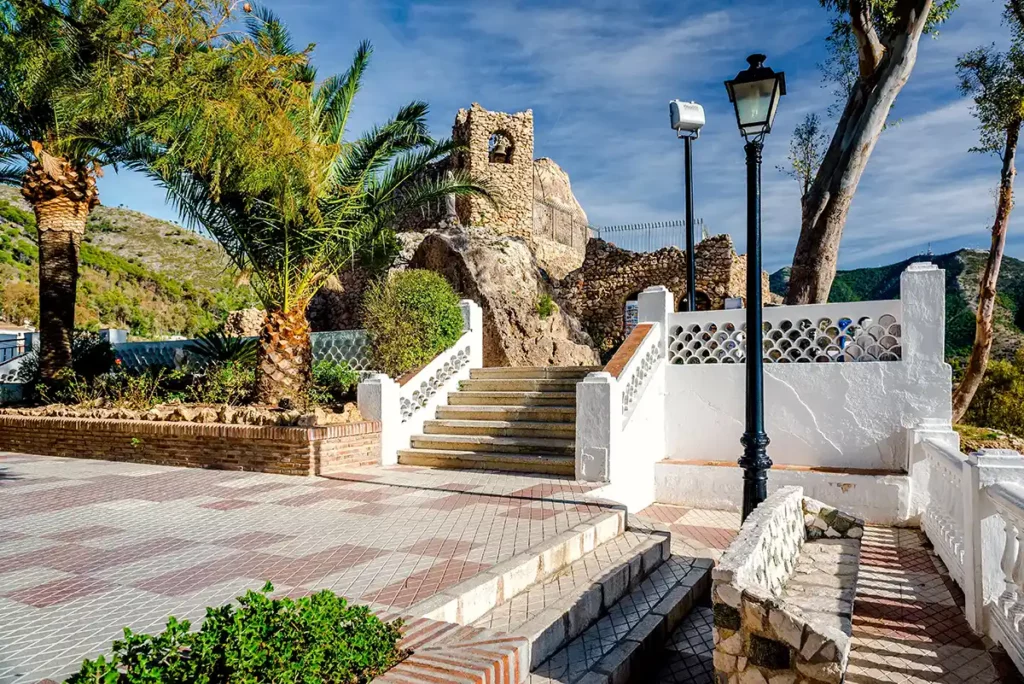
How to get to Mijas Pueblo
- By car: Mijas Pueblo is a relatively easy drive of about 30-40 minutes from Málaga. There’s a large multi-storey public car park at the entrance to the village.
- By public transport: The easiest way to get to Mijas Pueblo is to take a Cercanías train (Line C1) from Málaga to Fuengirola, and then catch the local M-122 bus M-122 from Fuengirola bus station up to Mijas Pueblo. The Fuengirola-Mijas bus takes about 20-30 minute. The total journey time using this combination is around 1 hour 30 minutes.
Caminito del Rey
Once known as one of the world’s most dangerous hikes, the Caminito del Rey has been fully restored into a safe but still thrilling walkway pinned along the steep walls of the Gaitanes Gorge.
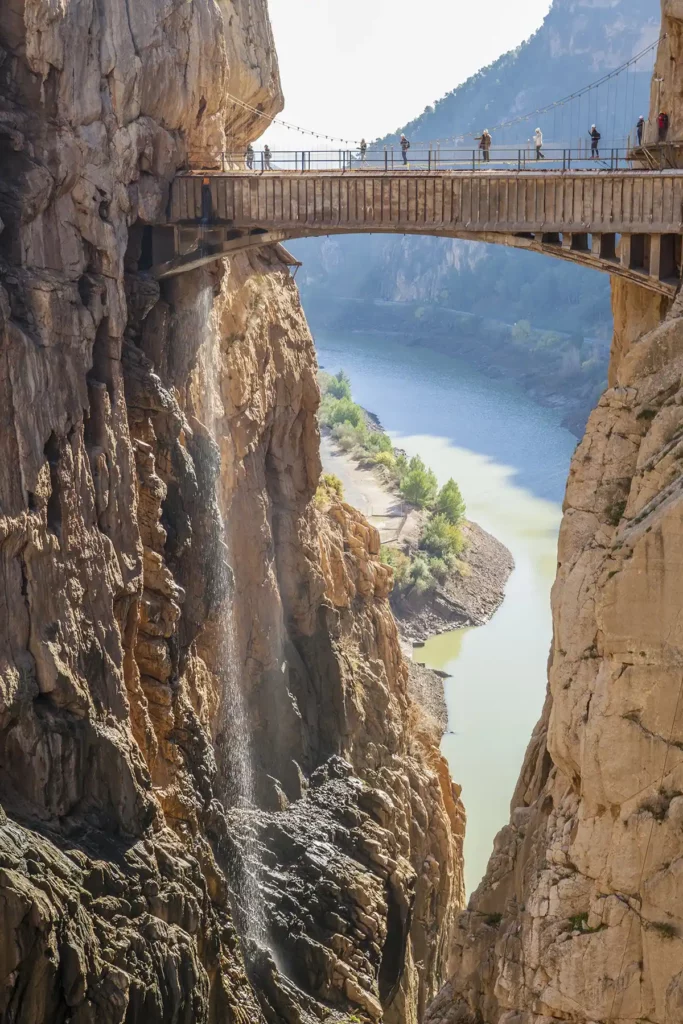
Doing the Caminito del Rey
The path is linear, running just under 8km in total, including the access paths to the start of the gorge walkways and from the end back to the shuttle bus stop. The entire experience (access walks, gorge path, waiting for shuttle) will take around 3-4 hours.
The most exciting part of the walk takes you high above the Guadalhorce River, through narrow canyons, past waterfalls, and across a suspension bridge. The views are spectacular, although it may not be suitable if you have a fear of heights!
Tickets for the Caminito del Rey sell out weeks or even months ahead, especially for weekends and holidays. You book a specific entry time slot. Children must usually be over 8 years old, and the walk is not suitable for those with vertigo, mobility issues, or a poor level of fitness. Wear sturdy walking shoes or trainers (no flip-flops or heels allowed).
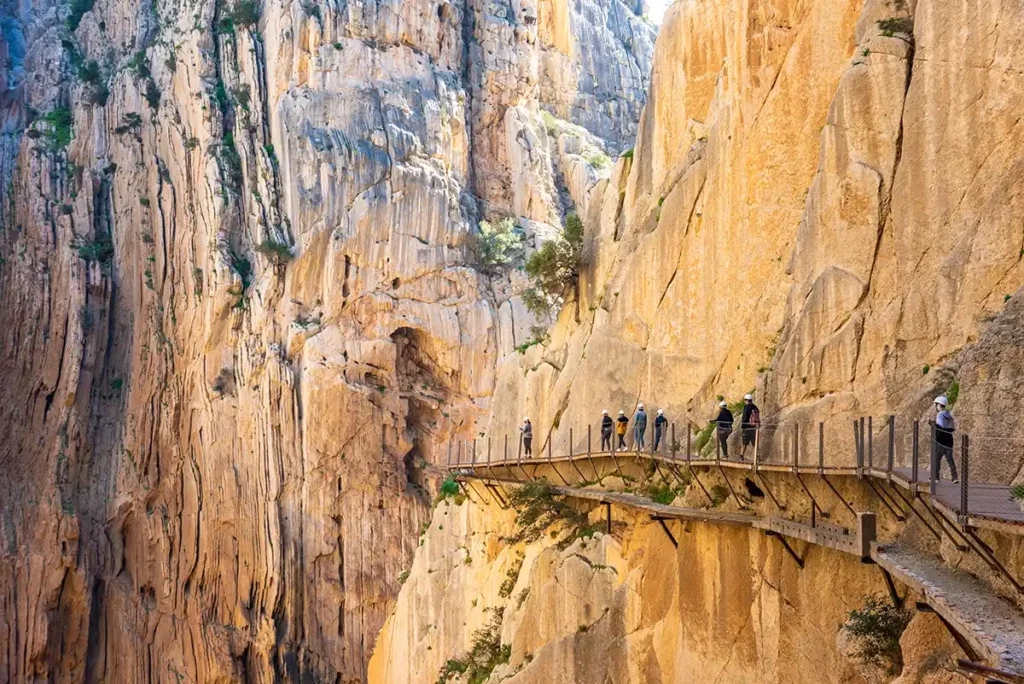
How to get to the Caminito del Rey
- Guided tour: The easiest way to do the Caminito del Rey is by taking a guided tour from Málaga. Booking a guided tour with Caminito del Rey tickets included means that’s all taken care of (although you’ll still need to book well in advance), and a tour bus can drop you off at one end of the route and pick you up from the other, with no shuttle bus needed. Some day trips from Málaga include a stop in a typically Andalusian pueblo blanco (white village).
- By car: The Caminito del Rey is around 1 hour north of Málaga. A shuttle bus connects the two ends of the walk. Arrive at least an hour before your allocated entry time to allow time for parking and getting to the entrance.
- By public transport: Getting to the Caminito del Rey by public transport is challenging. Trains run from Málaga María Zambrano station to El Chorro station, located near the exit of the Caminito, but there are only one or two a day. If you don’t have a car, I recommend taking an organised day trip from Málaga.
Gibraltar
Offering a unique blend of British and Mediterranean influences, Gibraltar is one of the most interesting day trips from Málaga. Dominated by its famous Rock, this British Overseas Territory provides history, unique wildlife (the Barbary macaques), and duty-free shopping, all within sight of Africa across the strait.
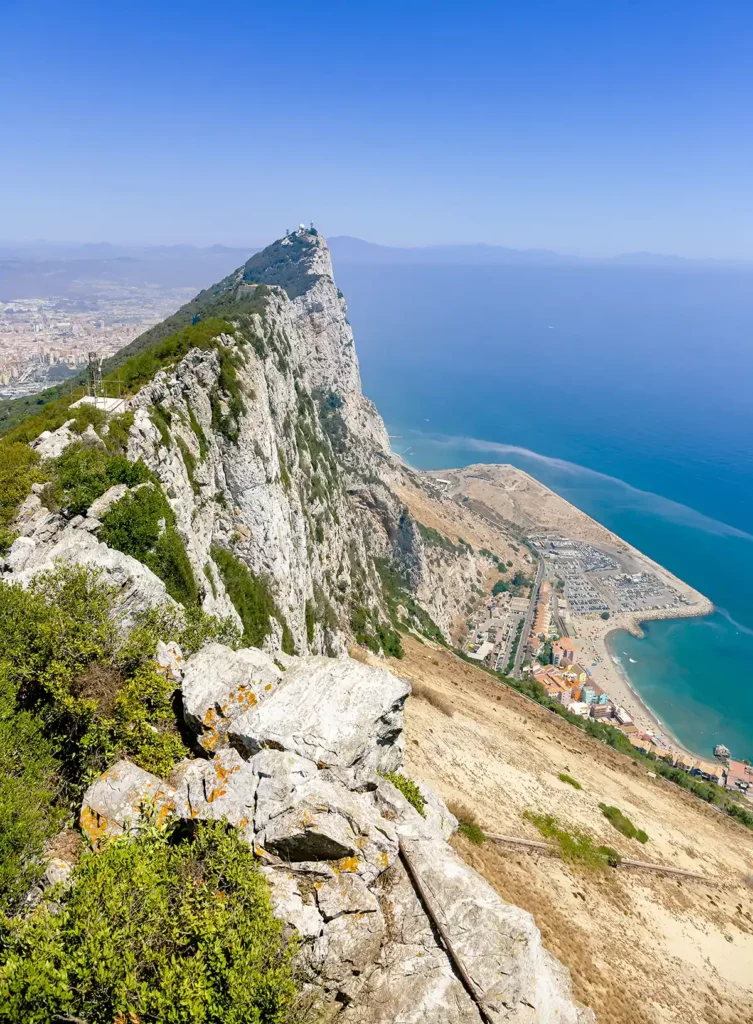
Things to do in Gibraltar
The Rock of Gibraltar is the main attraction. You can go up to the top on the Cable Car for spectacular views across the Bay of Gibraltar, Spain, and Morocco on clear days.
At the cable car’s top station, visit the Upper Rock Nature Reserve. This is where you’ll encounter the famous Barbary macaques, Europe’s only wild monkey population. They might look cute and friendly but treat them with respect and definitely don’t feed them! Also at the Upper Rock you’ll find St. Michael’s Cave, a stunning natural grotto often used for concerts.
Down in the town, wander along Main Street for duty-free shopping (tobacco, alcohol, perfumes are popular). Explore Casemates Square, the lively main square at the entrance to the town centre and visit the Great Siege Tunnels, a complex network carved out by the British army in the late 18th century.
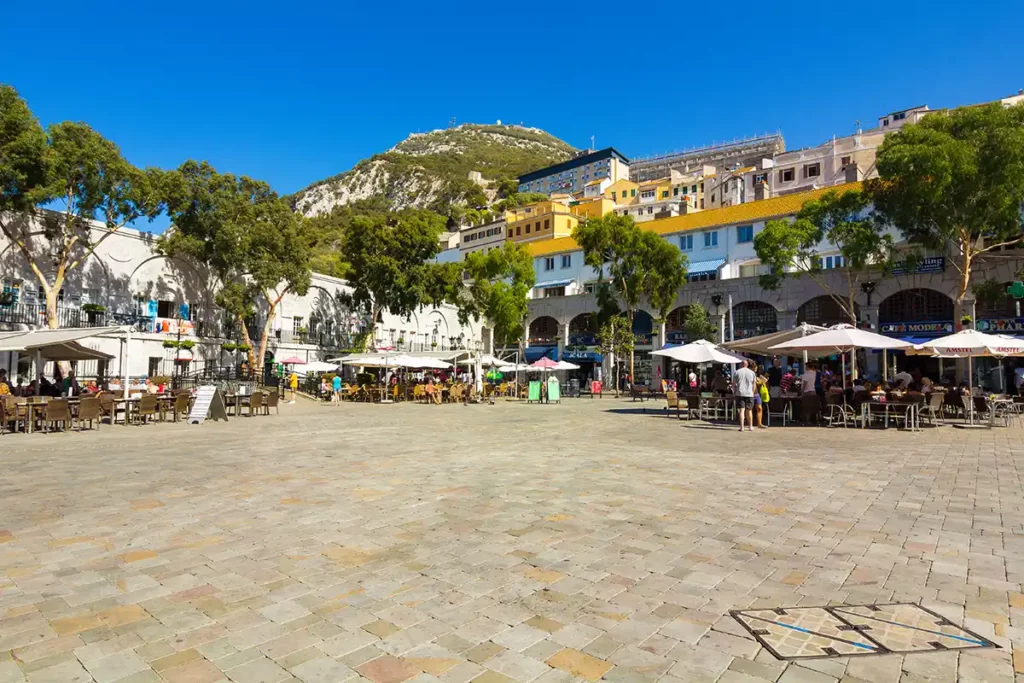
How to get to Gibraltar
- Guided tour: Gibraltar is a popular day trip from Málaga so there are a few coach tour options.
- By car: Drive west from Málaga along the A-7/AP-7 motorway towards Algeciras, then take the CA-34 towards La Línea de la Concepción, the Spanish town bordering Gibraltar. The drive takes around 1 hour 45 minutes. Do not drive into Gibraltar. Parking is extremely limited, and queues at the border can be long. Park in La Línea (several car parks available near the border) and walk across the frontier.
- By bus: Buses run from Málaga Bus Station to La Línea de la Concepción bus station, which is just a 5-minute walk from the Gibraltar border. The journey takes around 2 hours 30 minutes each way.
- You will need your passport to enter Gibraltar. There is a formal border check. Depending on the time of day and year, there can be queues for both pedestrians and vehicles (another reason not to drive in). Gibraltar uses the Gibraltar Pound (£GIP), which is pegged to the British Pound Sterling (£GBP). Euros (€) are widely accepted in tourist areas, but the exchange rate may not be favourable, and change is often given in £GIP.
Antequera and El Torcal
Combine a visit to the historic town of Antequera, known for its ancient dolmens and imposing Alcazaba, with the unique karst landscape of El Torcal Natural Park.

Things to do in Antequera
Visit the Antequera Dolmens Site, a UNESCO World Heritage site comprising three massive megalithic burial mounds over 5,000 years old. In the town itself, climb up to the Alcazaba for wonderful views over the town and the surrounding plain, including the Peña de los Enamorados (Lover’s Rock).
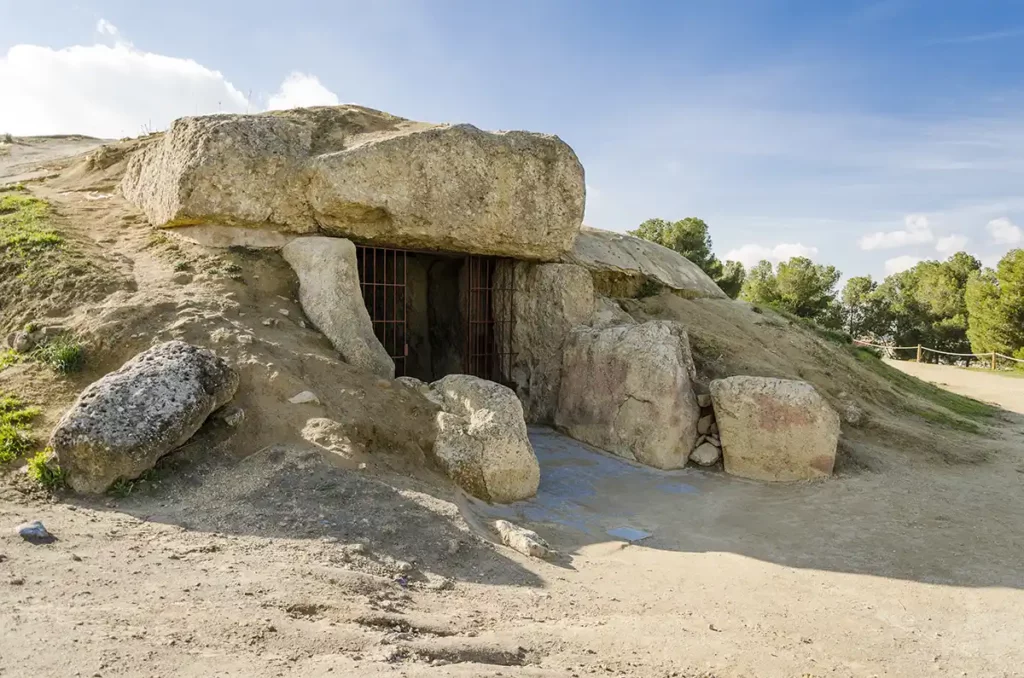
Things to do at El Torcal
El Torcal de Antequera is a nature reserve famous for its surreal limestone rock formations, shaped by millions of years of erosion.
There are several marked walking routes starting from the visitor centre:
- Green Route: An circular walk of about 1.5 km (45 mins), offering a good introduction to the landscape near the visitor centre.
- Yellow Route: A moderate loop of about 3 km (2 hours), taking you deeper into the unique rock formations.
- Orange Route: A more challenging 3.6 km one-way route.
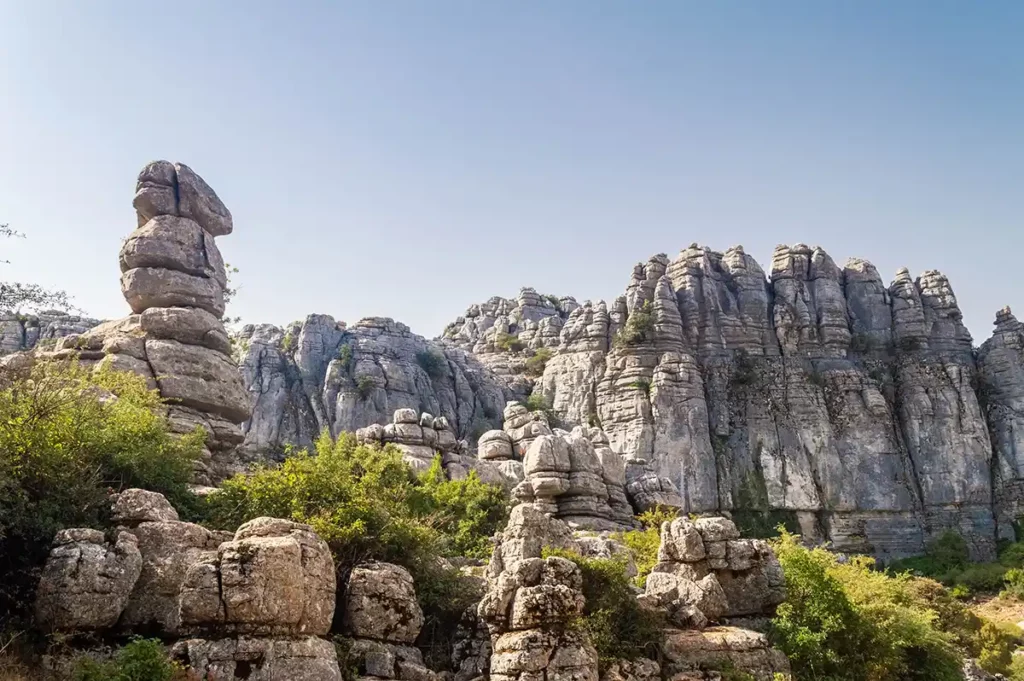
How to get to Antequera and El Torcal
- Guided tours: There are a couple of different guided day trips from Málaga to Antequera and El Torcal. Some are focussed on hiking in El Torcal, while others include the sights in Antequera and a shorter visit to El Torcal.
- By car: The drive to Antequera from Málaga takes just under an hour. El Torcal is a further 20-30 minute drive south of Antequera along scenic mountain roads. Parking is available in Antequera town and at the El Torcal visitor centre; the car park and access route to El Torcal visitor centre closes when the car park is full.
- By bus: ALSA runs reasonably frequent buses from Málaga to Antequera bus station, taking about an hour. Reaching El Torcal from Antequera without a car requires a taxi.
- By train: Antequera’s new high speed train station on the edge of town opened recently, linking Málaga to Antequera in under 20 minutes but taking the train is significantly more expensive than the bus.
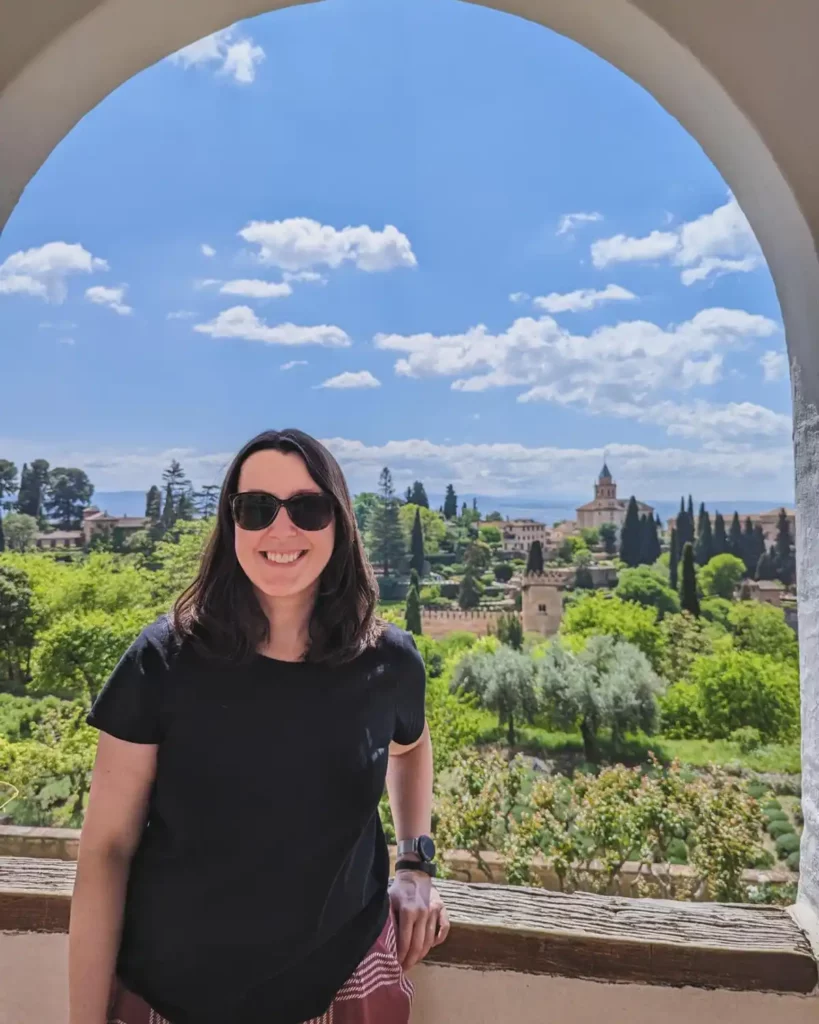
Final tips for planning your Málaga day trip
- Check ahead: Always check opening times, transport times (and pickup locations for guided tours) and prices before your trip.
- Book in advance: For popular attractions like the Alhambra in Granada and Caminito del Rey, booking tickets weeks or months ahead is crucial. Even for the Nerja Caves, booking online is recommended.
- Transport choice: Weigh the flexibility of a car against potential parking hassles and the ease (and often lower cost) of buses or trains. Consider organised tours too, even if you’re not normally a guided tour type of person – for some of these day trips from Málaga a guided tour makes a lot of sense and can even be the cheapest option.
- Wear comfortable shoes: Most destinations involve a fair amount of walking, often on uneven or cobbled surfaces. Don’t be like me and have to buy an emergency pair of trainers!
- Stay hydrated and sun protected: Especially from spring to autumn, the Andalucian sun is strong. Carry water, wear sunscreen, a hat, and sunglasses.
I hope this guide to day trips from Málaga has given you a few ideas for your trip. I’d love to hear about it if you end up doing one of these suggestions – leave a comment below to let me know!

